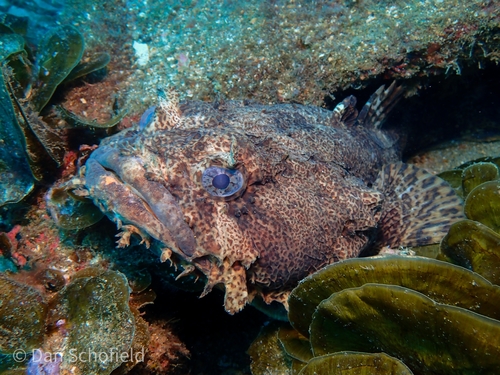
Oyster Toadfish
The Atlantic Bluefin Tuna (Thunnus thynnus) is a highly migratory, predatory fish renowned for its size, speed, and commercial value. As one of the largest bony fish, it plays a crucial role in the marine ecosystem. This species is a marvel of evolution, adapted for long-distance travel and high-speed pursuits, making it a top predator in the Atlantic Ocean.
2 11 years
Lifespan
43 cm
Length
Least Concern
Conservation Status
5 km/h
Swimming speed
Carnivorous, Scavengers
Diet
Local Migration
Migration
Appearance Overview
The Atlantic Bluefin Tuna is a large, torpedo-shaped fish with a metallic blue back and a silvery-white underside. It has a streamlined body built for speed and endurance.
Coloration
Dark metallic blue on top, silvery-white underside
Fins
Two dorsal fins, the first depressible; small finlets running from dorsal and anal fins to tail
Body shape
Torpedo-shaped, streamlined
Keel
Presence of a strong keel on each side of the tail base
Length
Up to 13 feet (4 meters), commonly around 6.5 feet (2 meters)
Weight
Up to 2,000 lbs (907 kg), commonly around 550 lbs (250 kg)
Diet
Carnivorous, feeding on a variety of fish (such as herring, mackerel, and eels), squid, and crustaceans.
Feeding Behavior
Highly active predator, using its speed and agility to hunt. They are opportunistic feeders and can also filter-feed on smaller prey.
Social Behavior
Forms large schools, especially when young. Schools may be segregated by size. Highly migratory, undertaking long trans-Atlantic journeys.
Commercial Relevance
Extremely high value, especially in the sushi and sashimi markets, where individual fish can fetch prices in the tens or even hundreds of thousands of dollars.
Conservation measures
Subject to international fishing quotas and regulations managed by organizations like ICCAT. Marine Protected Areas and fishing gear restrictions are also in place in some regions.
Status
Endangered (IUCN)
Threats
Historically severe overfishing, driven by demand for sushi and sashimi. Bycatch in fisheries targeting other species, climate change, and habitat degradation also pose threats.
Habitat Distribution
Depth Range
0-1,000 meters (0-3,280 feet), typically found in the upper layers of the water column.
Geographic Range
Western and Eastern Atlantic Ocean, Mediterranean Sea, and formerly the Black Sea.
Preferred Environment
Pelagic, open ocean environments. Prefers temperate waters but can tolerate a wide range of temperatures.
Reproduction and Life Cycle
Breeding Habits
Spawns in two main areas: the Mediterranean Sea and the Gulf of Mexico. Spawning occurs in warm waters, typically from May to July in the Mediterranean and April to June in the Gulf of Mexico.
Development Stages
Eggs are pelagic (free-floating). Larvae develop rapidly, feeding on plankton. Juveniles grow quickly, forming schools and gradually becoming top predators.
Fecundity
Highly fecund; a single female can release up to 30 million eggs per spawning season.
Maturity Age
Reaches sexual maturity at around 4-8 years in the Mediterranean and 8-12 years in the Gulf of Mexico.
Faqs about Oyster Toadfish
Where are Atlantic Bluefin Tuna found?
Atlantic Bluefin Tuna are found throughout the North Atlantic Ocean and its adjacent seas, including the Mediterranean Sea.
How long do Atlantic Bluefin Tuna live?
They can live for up to 40 years, though this is rare due to fishing pressure.
Are Atlantic Bluefin Tuna warm-blooded?
Yes, they are warm-blooded, unlike most fish. They have a specialized circulatory system that helps maintain a body temperature higher than the surrounding water.
How fast can Atlantic Bluefin Tuna swim?
They are among the fastest fish in the ocean, capable of bursts of speed up to 43 mph (70 km/h).
Why is Atlantic Bluefin Tuna so expensive?
Atlantic Bluefin Tuna meat is prized for its flavor, texture, and high fat content, making it a delicacy in many cuisines, particularly Japanese.
Copyright @ Nature Style Limited. All Rights Reserved.
 English
English